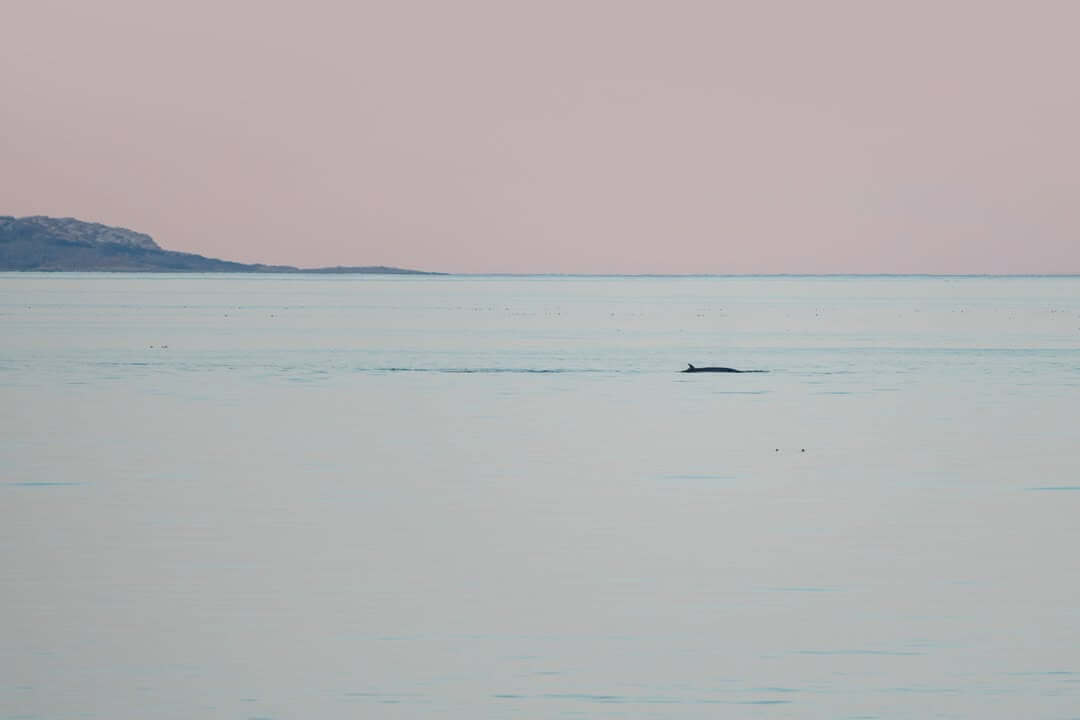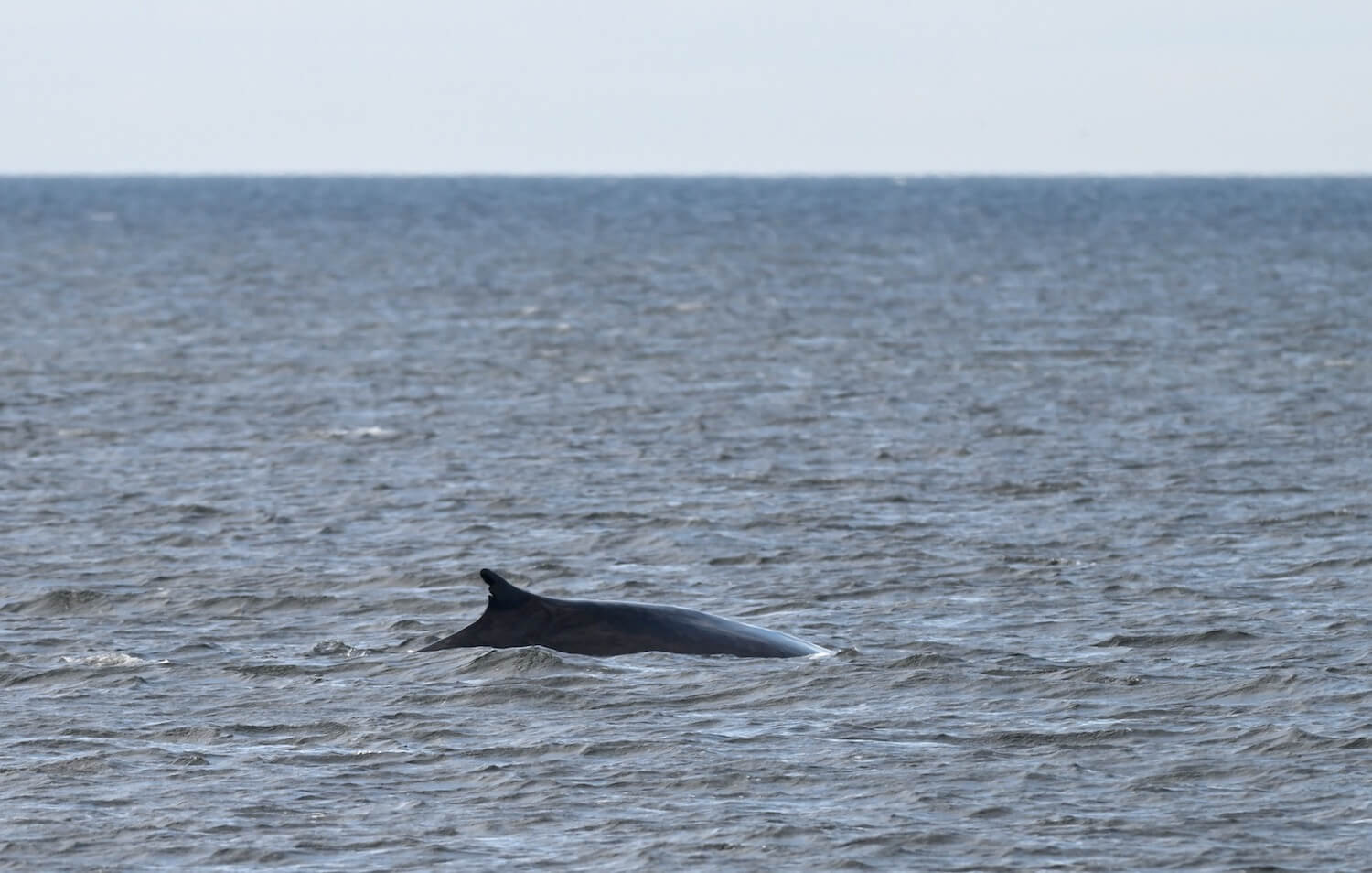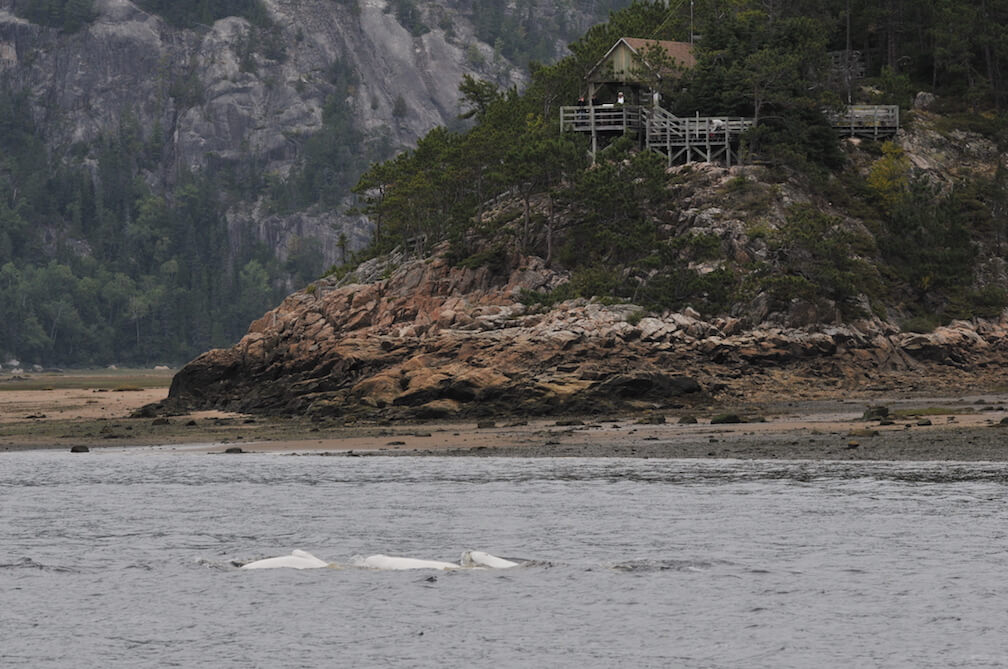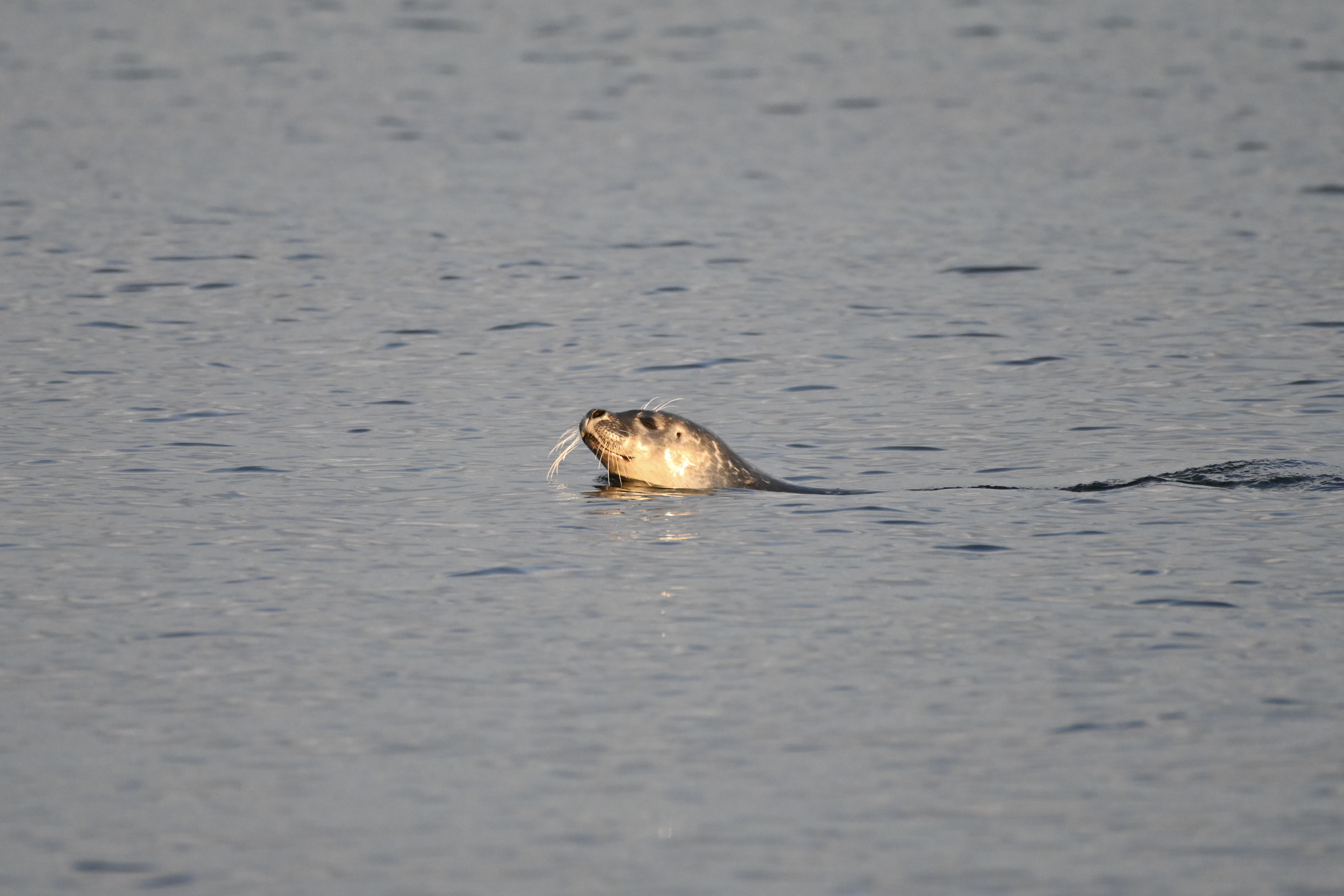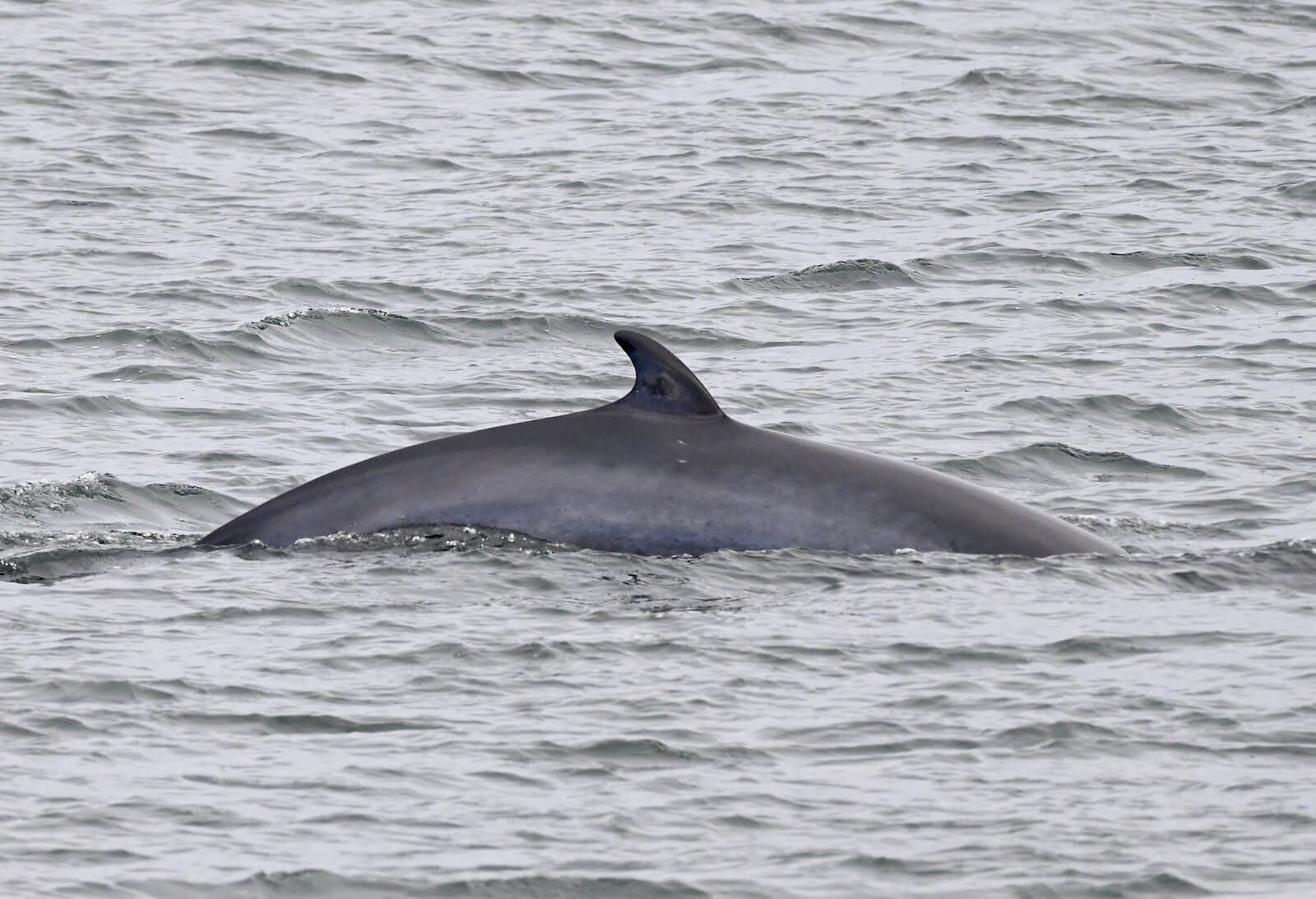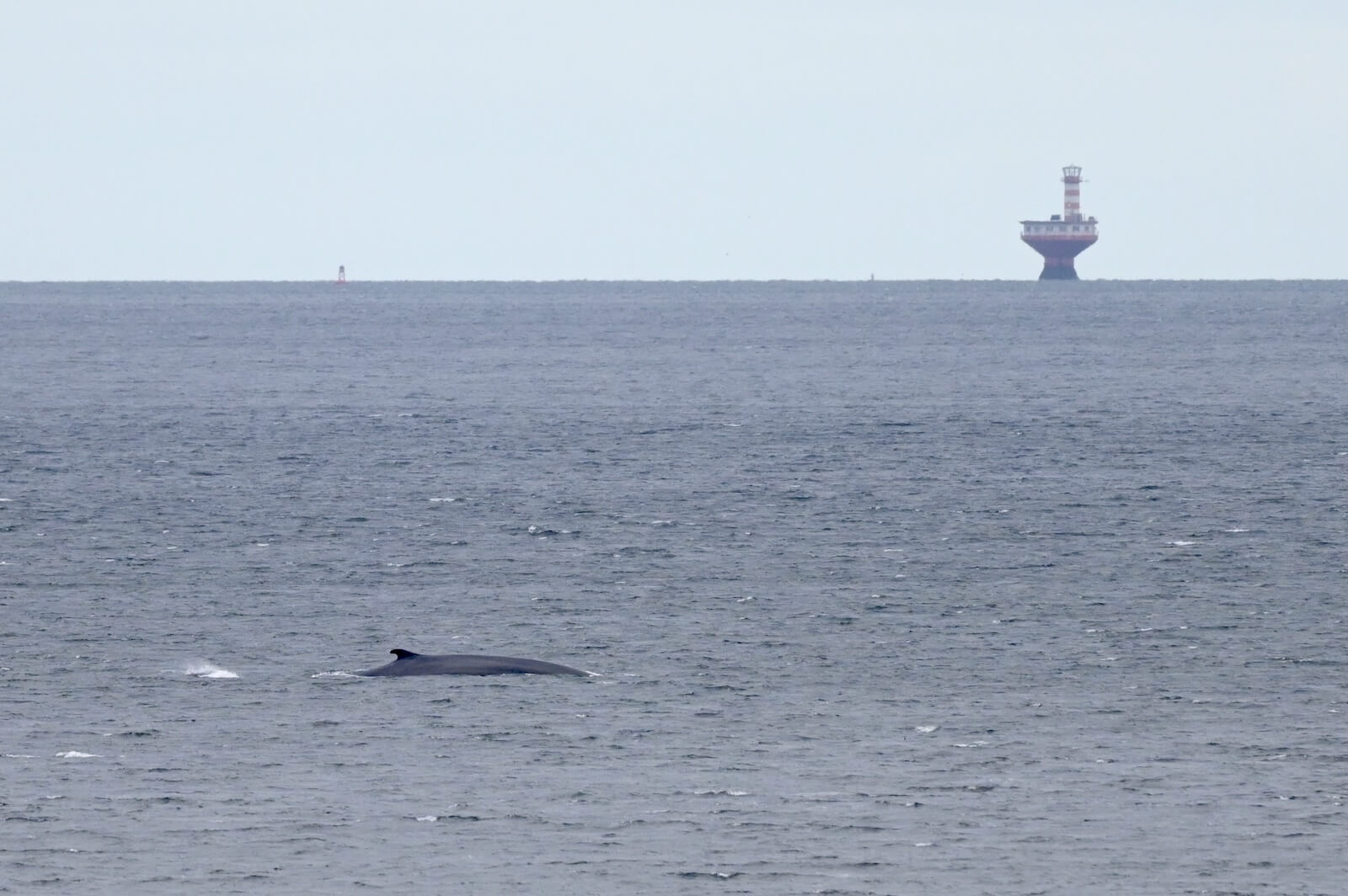Marine mammals were quiet this past week. Did the stiff winds drive them away, or were they simply less visible? Despite everything, there have been a handful of sightings of minke whales, belugas, and even large rorquals!
Beluga camouflage
When they weren’t hiding in the waves, belugas were seen swimming here and there. On May 18, a peaceful scene unfolded off the coast of Tadoussac Bay: Ten or so belugas were spotted, their white backs contrasting with the blue water. In Saint-Irénée, a resident commented on her lack of sightings: “I didn’t see anything at all. I must say, the river was raging!” In Les Escoumins, another beluga enthusiast experienced a similar week. “Other than a seal frolicking on a distant rock near Pointe-à-la-Croix in Les Escoumins, we didn’t see anything. The weather hasn’t really helped these past few days.” A more fortunate naturalist was able to photograph a fin whale that he had previously seen last winter.
Farther east, rumour has it (according to one local) that two humpbacks and five fin whales were passing through Franquelin. In Gallix, a quiet evening offers a stunning view of the river for one observer: “I saw three more minke whales in a similar setting as the other evening, with a pinkish sky and a calm sea… late in the day on May 16 in Gallix, but a little farther east of the village, offshore, opposite the mouth of the Sainte-Marguerite River.” A few seals and a minke whale were reported around the islands off Sept-Îles.
When the winds are blowing offshore, it’s best to stay on land. “Incredibly calm… Observations are mostly from shore for now… and mostly of birds!”
Getting ready for summer whale watching!
To make sure your next whale-watching experience is an unforgettable one, a minimum of preparation is needed. Whether from land or at sea, a few simple tips will help you maximize the odds and fully enjoy your experience.
Patience is essential. Marine mammals can appear at any time, often without warning. Bring binoculars to better spot spouts or fins. Dress warmly: Sea breezes are often cooler than you think, even in summer! Keep your ears open, too: Blowing whales can sometimes be heard before they are seen. It’s helpful to know the species present in the region and their habits. For example, some travel in groups, while others are more discreet.
Favour higher ground that offers an unobstructed view of the water, such as bluffs or cliffs. The Route des Baleines in Quebec’s Côte-Nord region boasts several such locations, but the Bas-Saint-Laurent and Gaspésie regions offer breathtaking landscapes and excellent observation sites, too. de merveilleux paysages et sites d’observation.
Thanks to all our collaborators!
Special thanks go out to all our observers who share their love for marine mammals with us! Your encounters with cetaceans and pinnipeds are always a pleasure to read and discover.
On the water or from shore, it is your eyes that give life to this column.
Guylaine Côté
Patrice Corbeil
Pierre-Soleil Dion
Marie-Andrée Charlebois
Thalia Cohen-Bacry
Michel Comeau
Laeticia Desbordes
Jade-Audrey Lavergne
Pascal Pitre
Renaud Pintiaux
Diane Ostiguy
René Roy
Andréanne Sylvain
Marielle Vanasse
Et à tous les autres!
And to all the others!
Additionally, we would like to acknowledge the following teams that also share their sightings:
Sept-Îles Research and Education Centre (CERSI)
Group for Research and Education on Marine Mammals (GREMM)
Marine Mammal Observation Network (MMON)
Quebec Marine Mammal Emergency Response Network (QMMERN)
Mingan Island Cetacean Study (MICS)
Would you also like to share your observations?
Have you seen any marine mammals in the St. Lawrence? Whether it’s a spout offshore or just a couple of seals, drop us a line and send your photos to [email protected]!


